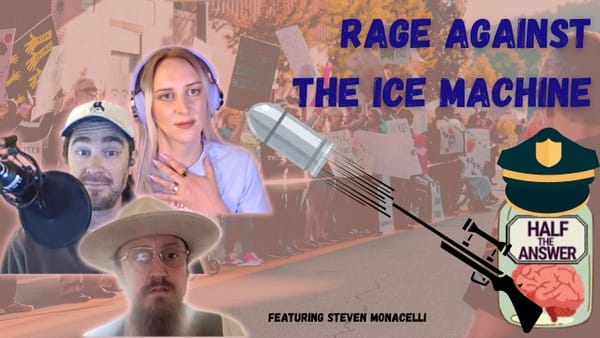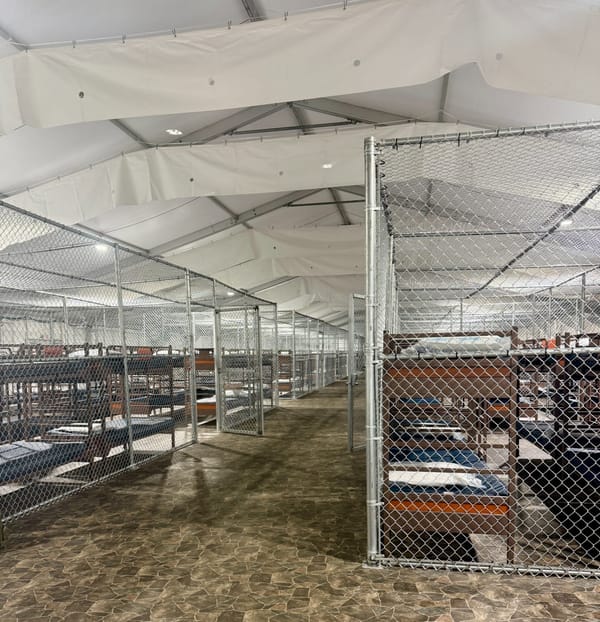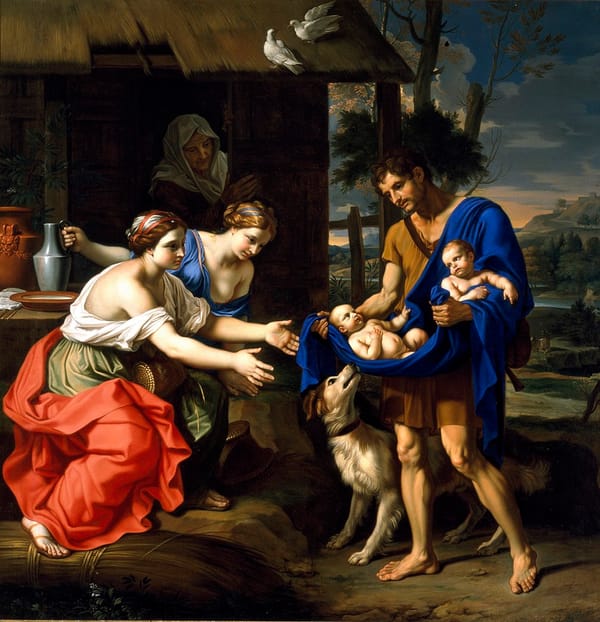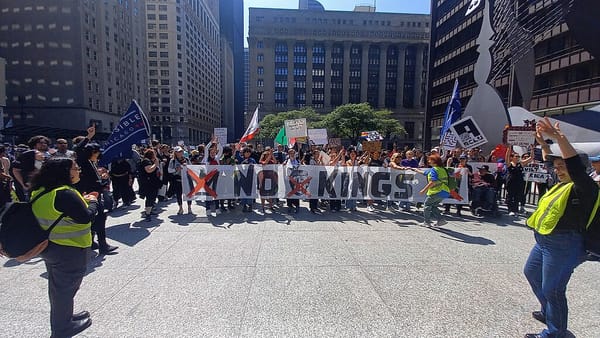A Poisonous Tradition
Robert Kagan's "Rebellion" and America's enduring antiliberalism.

Robert Kagan’s Rebellion: How Antiliberalism is Tearing America Apart—Again is a concise but thorough tour through the influence of American liberalism’s malign twin. It’s a Romulus and Remus story without the fratricide, a nation born of both the edifying instruction of liberal principles and the defiling influence of antiliberal attitudes, whose expression in American history has most often been found in racial injustice.
At one point or another in America’s existence, each logic has held the upper hand. On a more intimate scale, they have battled within the minds of the country’s most significant actors—antiliberalism prevailing as far back as Jefferson, who could not forsake the institution of slavery he criticized, and as recently as Trump.
And it’s antiliberalism’s successes that Kagan lays bare, reminding us from the outset that there is nothing inevitable about the liberal order. A middle section of the book surveys the antiliberal traditions of 19th century America, from the chattel slavery and subsequent Jim Crow system of the South to the anti-immigrant and anti-Catholic convulsions in America’s booming industrial states.
Antebellum America was, of course, a wasteland of racial injustice, but it was also sharply defined by religious discrimination. Here, the exclusion of Catholics from public office in states like New Jersey and New Hampshire accompanied generalized religious and ethnic bigotry toward Roman Catholics, the latter often directed at Irish immigrants.
As Kagan writes,
Religion was another area where the liberal principles of the Revolution and the early republic did not match the actual feelings and behavior of much of the American population. Neither at the time of the Revolution nor later did most Americans, regardless of religion, share Jefferson and Madison’s view that God has nothing to do with the founding of the republic and would not be taking part in the protection of people’s unalienable rights. Many, if not most, Americans saw god’s hand in everything … and of course it was their own god they had in mind…The new Massachusetts post-Revolutionary constitution required ‘all who take seats in the House of Representatives or Senate to declare their firm persuasion of the Christian religion,’ an oath designed to exclude atheists, agnostics, deists, and Jews. That provision remained in force until 1820. New Jersey specifically required state officeholders to be Protestants … New Hampshire effectively debarred non-Protestant officeholders until 1877.
The 19th century also saw anti-Catholic policies recede but not necessarily the sentiments, sustaining a WASP hegemony that Kagan notes lasted well into the 20th century. He writes,
For most of the first century after the Revolution, the main victims of the continuing dominance of Protestantism in American politics were Catholics. Indeed, if Southern slavery and white racism posed the most profound challenge to the new liberal ideals of the American government, virulent anti-Catholicism was a close second.
In the Jim Crow South, a savage, white supremacist antiliberalism dominated. Assaults on journalists were common. Single-party control by Southern Democrats meant corruption and spoils politics pervaded the region. Paramilitary politics put a violent edge on the already oppressive rule of a segregationist order. It was a landscape defined by antiliberalism, both codified as system of governance and in its unbridled and visceral interpersonal expression.
But it’s in his account of 20th century America where Kagan is at his best and most probing. Unlike many in the conservative movement—even avowed Never Trumpers—who still extol the memory of William F. Buckley, Jr., Kagan finds for himself a black mirror of Jefferson with all the unpleasantness that suggests. Jefferson was a towering intellect and loving admirer of the American experiment he helped to initiate, and yet he was a thoroughgoing racist and a man who consigned the burden of abolition to the process of history rather than give up a single slave himself. And Buckley was a man not of his time but of the past, willing an America that seemed finally ready to seize the liberal promise of racial equality to return to the sunny, supremacist uplands of the Revolution.
In Kagan’s account, Buckley, Russell Kirk, and the rest of the new conservative movement were a renewal of the antiliberal tradition in American political and public intellectual life, stirring it from its Roosevelt-era stupor to break the two-party liberal consensus that had come to dominate the immediate post-war years. He writes:
The supposedly new conservative movement that Buckley did more than anyone to construct in the 1950s and 60s picked up where the conservative antiliberalism of the 1920s had left off: defending white supremacy. Buckley’s National Review, throughout its first decade, was a bastion of support for the South’s resistance to desegregation … What made Buckley such an influential figure in the conservative movement was the way he framed the issues. He portrayed efforts to bring the South in line with the principles of the declaration as radical social experimentation. He dressed up conservative antiliberalism as a Burkean respect for history and tradition. He attacked liberals for imposing ‘ideological abstractions about equality’ against the South’s traditions.
Kagan’s Buckley is also similar to Jefferson in the most tragic and profane ways, a defiant and lively thinker who nevertheless defended the very worst of Jim Crow apartheid. Kagan does applaud Buckley’s expulsion of the Birchers from the conservative movement. But in Kagan’s view, Buckley was primarily a savvy field marshal for the new right. Whereas Jefferson was a man who failed to transcend his era but whose best ideas illuminated a new, liberal world, Buckley defied his era by being a man of the past, shackling his intellect to the sinking ideals of America’s historic prejudices and hauling them to the surface once more. As Kagan puts it, “When Buckley claimed to be standing athwart history yelling stop, therefore, it was not history as of 1957. It was history as of 1776.”
This is the book’s most compelling section. It’s here that we confront the moment when America appeared to be reconciling the unfinished projects of reconstruction and multicultural democracy. It’s in opposing the attempt to shed those racial shackles to which Jefferson and Kagan refer that the mid-20th century new right of Buckley and his collaborators found its energy. There is a sense of coming full circle. Kagan’s historical construction of the twin births of American liberalism and antiliberalism is most illuminating here.
This tandem is carried further by Kagan’s focus on immigration in sparking a renewed bout of 21st century antiliberalism. Here, George W. Bush and his pro-immigration compassionate conservatism takes up the position that Eisenhower and other liberal Republicans had for Buckley’s cohort. If Buckley recalled the racial politics of 1776, then George W. Bush’s antiliberal, anti-immigrant critics recalled the mid-19th century traditions of religious and ethnic exclusion that fueled the Know-Nothings and other nativist organizations of the early Republic.
And yet, despite their anger at figures like Eisenhower and Bush and their disappointment in Reagan, conservative antiliberals continued to flock to the GOP, and so they also continued to build their capacity to get the sort of candidate they really wanted—one who would not water down or abandon the antiliberal vision of American life. The 2000 primary fight between George W. Bush and John McCain is quaint in retrospect. By 2012, Kagan notes that 44% of Republican primary voters cast their lot in with one of the antiliberal candidates—Rick Santorum, Newt Gingrich, and Ron Paul. This was, Kagan emphasizes, nearly the same percentage that would launch Trump to the nomination in 2016.
From there, it feels as if we are on a water slide, whipping past anti-Obama racism, hurtling through the stillborn Republican autopsy of 2012, and flying past the last gasp of bipartisan liberalism in the Gang of Eight’s attempted immigration reform.
Antiliberalism has returned in full, more muscular and threatening than it has been in decades. But it was always with us, the other child of the Revolution that we are frequently either too proud or too ashamed to acknowledge. Kagan’s constant reminder that liberalism is not inevitable should make us take the threat posed by American antiliberalism today as seriously as possible.
Kagan manages to diagnose both the acute and chronic nature of our present crisis. Trump is unique. American antiliberalism is not. Resisting the former will not cure us of the latter, but we are faced with the most forceful wave of American antiliberalism in a generation. And America’s future depends on how we meet it.
Featured image is Riot in Philadelphia, by H. Bucholzer




